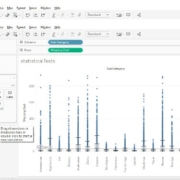Machine Learning (ML) gets a lot of hype, but its Classical predecessors are still immensely powerful, especially in the time-series space. Error, Trend, Seasonality Forecast (ETS), Autoregressive Integrated Moving Average (ARIMA), and Holt-Winters are three Classical methods that are not only incredibly popular but are also excellent time-series predictors.
In fact, according to Statistical and Machine Learning forecasting methods: Concerns and ways forward, ETS outperforms several other ML methods including Long Short Term Memory (LSTM) and Recurrent Neural Networks (RNN) in One-Step Forecasting. Actually, all of the statistical methods have a lower prediction error than the ML methods do.










 Photo credit Flickr/
Photo credit Flickr/